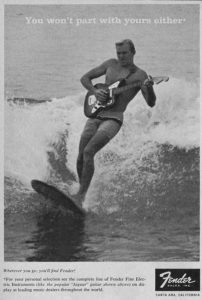Guitar Amps: What’s in a Brand Name?
This month’s article is interactive! That’s right, you have an opportunity to voice your opinion and I’ll publish the collective feedback next month. The topic is: branding.
This month’s article is interactive! That’s right, you have an opportunity to voice your opinion and I’ll publish the collective feedback next month. The topic is: branding.
Tradition is a powerful thing and change is hard to make. But, if you consider how tone controls affect an amp’s signal chain, investigate what a guitar and amp sound like with minimal tone controls (or none!) and then decide if you really need them, you might be surprised at your conclusion.
My first home recording set up was an Akai ¼ inch 2 track and a Harmon Kardon cassette deck, no EQ, the only effects I had were a few effects pedals. I would program one of my primitive drum machines or use a factory preset non-programmable rhythm machine while I was recording that I would usually add my bass or rhythm guitar. And after a suitable take I would ping pong the tracks back and forth from the 2 track to the cassette, adding effects on the fly.
This month I will be discussing a much overlooked aspect of guitar playing and appreciation, the professional setup. As I always say – this is not MY Guitar until it is setup to my specifications. I think perhaps 90% of today’s guitar players do NOT have a personal guitar repair technician that they work with. People have a favorite video / music store with a favorite clerk that helps them with selections, a tailor, a banker, a doctor, a dentist, a lawyer… yet they don’t have a favorite guitar tech. Why? Here are three scenarios that will exemplify this point.
Hello to all out there in guitar dominion, this month’s column will I hope reveal some of the great secrets of some of our favorite guitar players as well as dispel some common misunderstandings. One of the greatest musicians of the 20th century was also a damn good guitar player, he stands alone as a composer, instrumentalist and satirist beyond compare. His name was Frank Zappa. Frank is still IMHO the most underrated musician in the rock and roll era.
This month’s column will feature some of my favorite vintage pedals and effects. These choices will be from my point of view and experience, and as I cannot with expertise speak about effects that I cannot use in the type of music I play (which is blues, old school country, classic rock and 50’s and 60’s R&B). I again welcome all suggestions for your favorite effects.

Since its inception, legions of surf guitar players have engaged in heated debate about gear. Suffice it to say, everyone has an opinion. However, newbies often want a simple answer to the question, “What do I need to get going?” Below, I lay out the answers, based on the classic traditional surf sound of the Sixties. Whether you want to nail the sound with vintage gear, or whether you are on a budget, you’ll find useful guidelines here.
I’ve been playing the electric twelve string guitar professionally for the last 16 years in my band The Carpet Frogs. Guitar players have often complimented me on the tone of my electric 12 string and have asked me how I get that “authentic” sound! For me, it all started with the two Godfathers of the electric 12 string: George Harrison of the Beatles and Roger McGuinn of The Byrds. Obviously, the first ingredient is a great 12 string. The Granddaddy of them all is the Rickenbacker 12 string.
Sure, you can rattle off scales and string riffs together and throw in the odd mode or two, but unless you’re thinking melody, you have not made music; you are not improvising. You may have confirmed that you know which building blocks fit, but you’ve created nothing new. Improvisation to me implies invention, and you don’t invent scales any more than an artist invents Cobalt Blue or Vermilion Red. Scales and modes are like the squirts of paint on a palette. You have to choose carefully which to use, which to blend. Start mixing too many colors and you wind up with mud.
That’s where capos come in. Whoever invented the guitar must have already thought of the capo, which compensates for the unfriendly keys. A simple idea, it effectively moves the nut up the neck by clamping down all all strings at once. The result is to raise the overall pitch while keeping the relative tuning of all the strings intact. This allows the player to choose another key to play in, a more friendly key. I should really say ‘pretend key’ because the key doesn’t change at all. Only the fingering changes, as if it were a new (friendly) key.
Powered by WordPress. AwesomeOne theme by Flythemes
